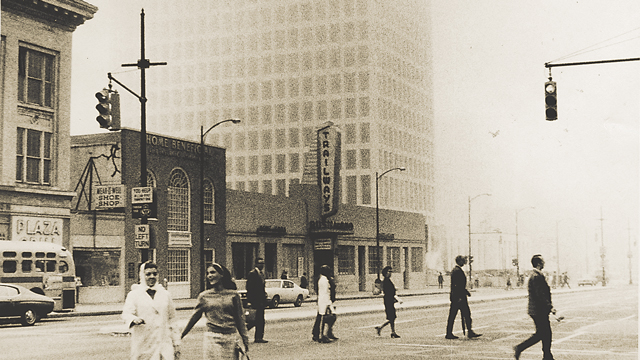Only weeks after its founding in December 1970, the Environmental Protection Agency (EPA) was charged by Congress to establish federal air quality standards.
The Clean Air Act passed as a direct response to the smog that afflicted most American cities, including Richmond. In 1972, federal officials declared that Richmond had the worst air quality in Virginia, nearing pollution levels in Philadelphia and Baltimore. At that time, the Virginia Air Pollution Control Board estimated that about 170,000 tons of pollutants were discharged into the city’s air each year – from auto emissions, open burning, smokestacks, and less obvious sources such as dry cleaning exhaust. City Hall (shown here) was hardly distinguishable under a blanket of smog.
Charged with meeting new federal standards at the risk of losing federal highway funds, the city and state adopted strategies suggested by the EPA, such as improving bus access, setting up burning bans, establishing carpool lanes, and requiring local service stations to carry cleaner-burning gasoline.
The city even assembled a mobile patrol to seek out illegal burnings, though vehicle emission standards were never adopted in the Richmond area. Despite some progress, Richmond would consistently make the EPA’s list of smoggiest cities until the late 1990s. For decades, views like this one were not uncommon downtown and in the East End. But a turning point came in 2004, when the EPA increased regulation enforcement on power plants and factories on the East Coast.
In 2007, Richmond was removed from the federal list of smoggy areas, though it struggled to meet increasing air quality standards. By 2009, however, Richmond was again exceeding federal ozone limits.





